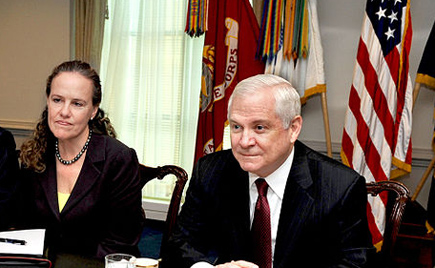How to prepare for national security challenges
 Department of Defense
Department of Defense
Michèle Flournoy, Under Secretary of Defense for Policy in the Obama Administration, writes about how the next president can prepare for the national security challenges he or she will face.
The next American president will inherit a truly daunting set of national security challenges. He or she will likely face the most complex, volatile, and fast-moving international security environment since the end of World War II. No matter how important and urgent the domestic policy agenda, a wide range of issues affecting U.S. national security will demand a significant portion of the new administration’s bandwidth and energy.
The experiences of past presidents in their first year in office offer a compelling set of lessons—and in some cases, best practices—for managing the daunting national security inheritance the next president will inevitably face. There are several concrete steps the next president can take to prepare the incoming administration to navigate stormy national security waters in 2017 and beyond. For starters, the next president should:
1. Come into office with a clear assessment of U.S. national security challenges, opportunities, goals, and priorities, and a strategy to align the administration’s efforts in the first year.
2. Choose a national security team based not only on individual experience, expertise, and qualifications for each cabinet position but also on how effectively the group will work together as a team.
3. Start with a clean sheet of paper and redesign the NSC staff and process, taking care to clearly define the respective roles of the National Security Advisor, the National Security Council principals, and the NSC staff, and the president’s expectations of each.
4. Pay immediate and close attention to any ongoing or imminent military or intelligence operations, particularly those that put Americans in harm’s way.
5. Given the volume and complexity of the national security agenda, set aside time, especially early on, for a regular tempo of engagement with his or her team to set direction, monitor execution and outcomes, course correct, and learn.
6. Develop an initial agenda of initiatives and actions designed to signal renewed U.S. leadership internationally and communicate the administration’s strategic priorities.
7. Make a comprehensive budget deal a top national security priority.
8. Ensure that the national security team invests up front in a healthy civil-military relationship.
9. Invest in the professional development of the people on the national security team—whether political appointees, civil servants, foreign service officers, intelligence professionals, or military officers—as a sure fire way to enhance the team’s performance.
These recommendations are certainly no guarantee of success, but they can help a new president start strong as commander in chief and reduce the risk of major national security missteps in the first year of a new administration. They also substantially improve the president’s chances of being able to advance a smart international agenda and ultimately strengthen both U.S. national security and U.S. global leadership.